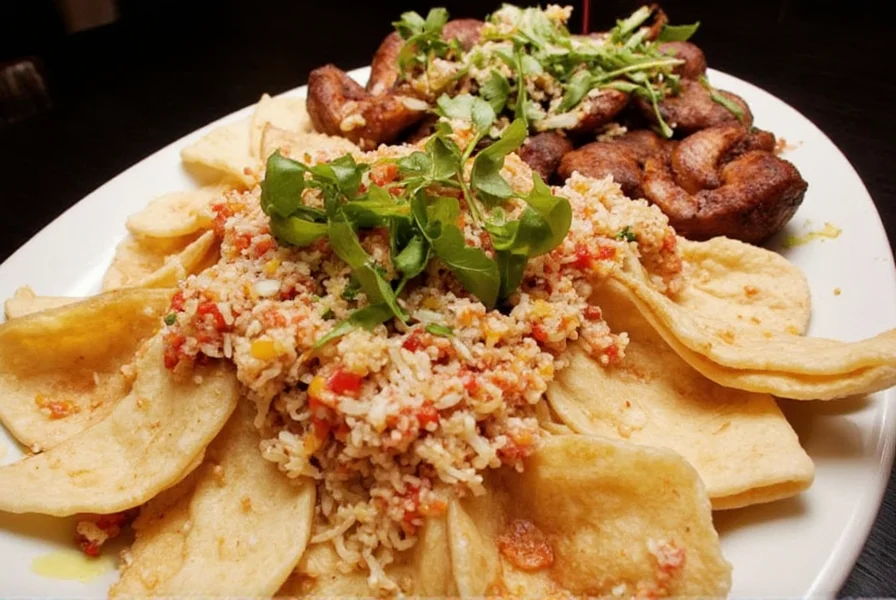For those seeking an authentic Persian dining experience, Saffron House of Kabob delivers traditional Iranian cuisine with a focus on quality ingredients and time-honored preparation methods. This restaurant has established itself as a destination for genuine Middle Eastern flavors, particularly known for its expertly grilled kabobs and distinctive use of saffron—the world's most expensive spice—which gives many dishes their characteristic golden hue and subtle floral notes.
Understanding Persian Culinary Traditions
Persian cuisine represents one of the world's oldest culinary traditions, with techniques refined over millennia. At Saffron House of Kabob, chefs adhere to authentic preparation methods that distinguish Iranian cooking from other Middle Eastern cuisines. The restaurant's approach emphasizes balanced flavors rather than overwhelming spiciness, featuring complex combinations of herbs, fruits, nuts, and aromatic spices.
What sets authentic Persian kabob preparation apart is the meticulous attention to meat quality and marination process. Unlike many Western interpretations, traditional Persian kabobs use minimal marinade—typically just onion, salt, and pepper—to allow the natural flavor of high-quality meats to shine. The grilling technique involves precise temperature control to achieve the perfect char without drying the meat.

Signature Dishes Worth Trying
The menu at Saffron House of Kabob features several standout items that showcase Persian culinary expertise:
| Dish | Key Ingredients | Preparation Notes |
|---|---|---|
| Joojeh Kabob | Marinated chicken breast, saffron, lemon | Traditional Persian saffron-marinated chicken grilled to perfection |
| Barg Kabob | Filet mignon, onion, spices | Lean cut grilled with minimal marinade to highlight meat quality |
| Tahdig | Rice, saffron, yogurt or egg | Crispy Persian rice crust considered the prized portion of the meal |
| Ghormeh Sabzi | Herb stew, kidney beans, dried lime | Traditional Persian herb stew served with rice |
The restaurant's namesake ingredient—saffron—features prominently in many dishes. This precious spice, harvested from crocus flowers, imparts a distinctive golden color and subtle floral aroma to rice dishes and marinades. Saffron House of Kabob uses genuine saffron threads rather than artificial substitutes, which significantly impacts the authenticity of their Persian rice preparations.
What Diners Should Expect
Visitors to Saffron House of Kabob will find a dining environment that balances traditional Persian elements with contemporary comfort. The ambiance typically features Middle Eastern textiles, subtle geometric patterns, and warm lighting that creates an inviting atmosphere without overwhelming cultural clichés.
Service follows Persian hospitality traditions, where staff often provide detailed explanations of dishes and their cultural significance. Many patrons note that servers demonstrate genuine knowledge about ingredient origins and preparation methods—a testament to the restaurant's commitment to authentic representation of Iranian cuisine.
Price points generally position Saffron House of Kabob as a mid-to-upscale dining option, reflecting the quality of ingredients (particularly the genuine saffron and premium meats) and the labor-intensive preparation methods required for authentic Persian dishes.
Planning Your Visit
For those considering a visit to this authentic Persian kabob house, several practical details enhance the dining experience:
- Reservations are recommended for weekend dining, particularly for parties of four or more
- Lunch service typically offers slightly more casual pricing while maintaining the same quality standards
- Many patrons suggest trying the combination platters to sample multiple kabob varieties
- The restaurant accommodates various dietary preferences with vegetarian options like Bademjan (eggplant stew)
What distinguishes Saffron House of Kabob from other Middle Eastern restaurants in the area is its unwavering commitment to traditional preparation methods. While some establishments adapt recipes to local tastes, this Persian restaurant maintains authentic flavor profiles that would be recognized in Iran itself. The careful preparation of rice—considered sacred in Persian culinary tradition—particularly demonstrates this dedication, with multiple varieties featuring different textures and saffron infusions.
Frequently Asked Questions
Does Saffron House of Kabob offer vegetarian Persian dishes?
Yes, while known for its kabobs, Saffron House of Kabob provides several traditional vegetarian options including Bademjan (eggplant stew), Kookoo Sabzi (herb frittata), and various rice dishes. Many Persian rice preparations are naturally vegetarian and feature the restaurant's signature saffron infusion.
What makes Persian rice at Saffron House of Kabob special compared to other restaurants?
The restaurant prepares Persian rice using traditional methods that create tahdig—the prized crispy crust at the bottom of the pot. They use genuine saffron threads rather than artificial coloring, and offer multiple rice preparations including Baghali Polo (with dill and fava beans) and Sabzi Polo (with herbs), each requiring precise cooking techniques developed over generations.
Is Saffron House of Kabob suitable for special dietary requirements?
The restaurant accommodates various dietary needs with advance notice. Many traditional Persian dishes are naturally gluten-free, and the kitchen staff can modify preparations for allergies. For halal dietary requirements, all meats are prepared according to Islamic guidelines, which is standard practice in authentic Persian restaurants.
How does Saffron House of Kabob incorporate saffron into their dishes?
Rather than using artificial substitutes, the restaurant employs genuine saffron threads that are carefully steeped in warm water or rosewater to release their flavor and color. This saffron infusion appears in rice dishes, marinades for chicken kabobs, and traditional Persian sauces, providing the distinctive golden hue and subtle floral notes that characterize authentic Iranian cuisine.
What should first-time visitors to a Persian kabob restaurant expect?
First-time visitors should anticipate a multi-course dining experience that often begins with fresh herbs, flatbread, and cheese. Persian meals typically feature grilled meats served with rice and grilled tomatoes, accompanied by side dishes like mast-o-khiar (yogurt with cucumber). Unlike some Middle Eastern cuisines, authentic Persian food emphasizes balanced flavors rather than heat, with complex combinations of herbs, fruits, and subtle spices.










 浙公网安备
33010002000092号
浙公网安备
33010002000092号 浙B2-20120091-4
浙B2-20120091-4